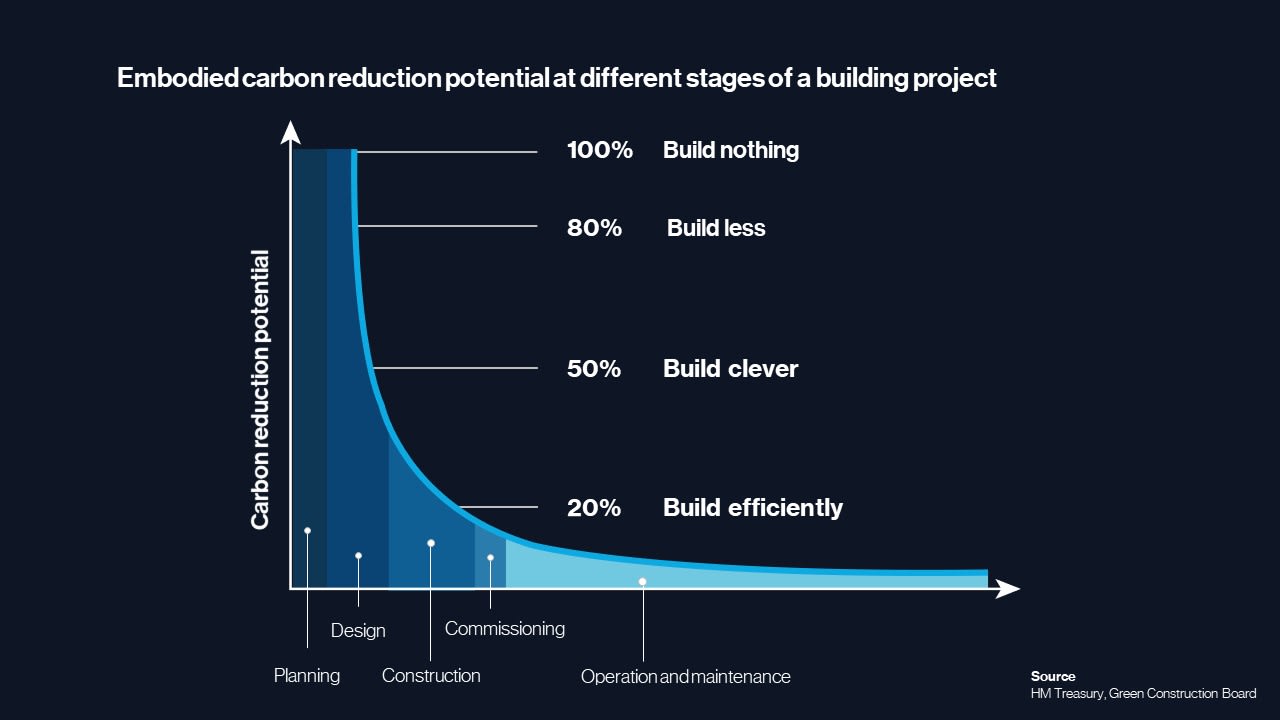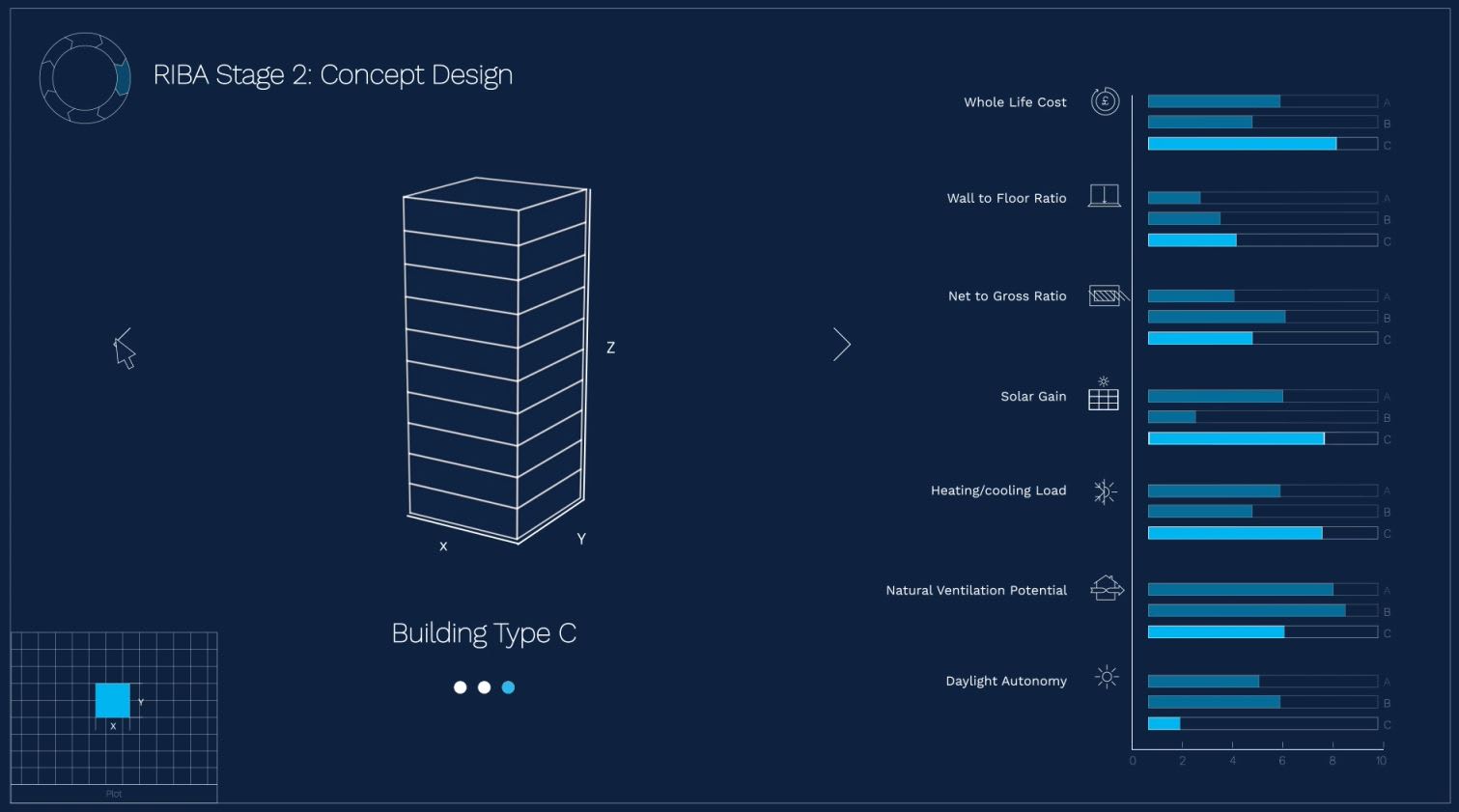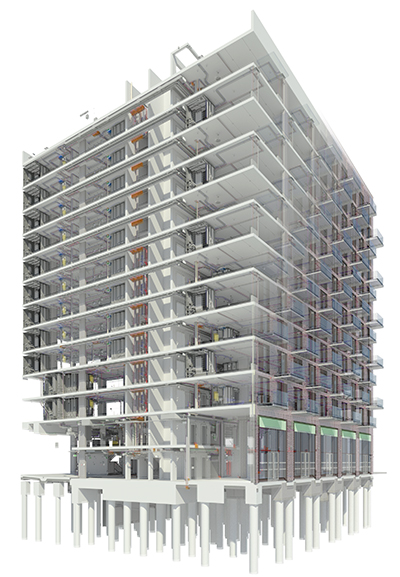A proof of concept “decision support tool” that enables designers to calculate the whole-life cost and whole-life carbon footprint of buildings in BIM has been developed by a cross-industry team led by architect Cartwright Pickard and The Mackintosh School of Architecture.
The software is the result of a two-year government-backed research project to create a tool to interactively test the long-term viability of alternative design options using consistent real data from in-service buildings, rather than historical datasets.
The aim is to support the UK’s commitment to become carbon neutral by 2050 as well as achieve a 33% reduction in whole-life cost by 2025.
The working prototype 7D BIM model, of a Quintain residential block in Wembley Park, north-west London, features an interactive interface that enables users to automatically test out the impact of specifying different products and materials on whole-life cost and carbon.
James Pickard, director at Cartwright Pickard, told BIM+: “If you select different window types, such as timber, aluminium, PVC, or composite, the tool provides predictions for the whole-life cost and whole-life carbon for 50 years for that type and the impact on the entire cost of the project. For example, timber needs to be treated or painted more often, so the whole-life cost increases due to the extra maintenance, but whole-life carbon drops massively because timber is so sustainable.”


An interactive interface enables users to automatically test out the impact of specifying different products and materials on whole-life cost and carbon.

The working prototype 7D BIM model is a Quintain residential block in Wembley Park
The research was backed by a £100,000 grant from Innovate UK, which was more than match funded by the industry partners on the project. These also included BLP Insurance, Morgan Sindall Construction, Galliford Try Partnerships, Prosperity Capital, Etex, Hoare Lea, Stanhope and Elliott Wood.
Research carried out by the team found that 80% of operation, maintenance and replacement costs can be influenced in the first 20% of the design process. However, architects and engineers typically lack the proper tools and consistent whole-life data required to design buildings based on long-term impacts.
Pickard commented: “Most architects and engineers don’t have a clue about whole-life carbon or whole-life costs and the implications on the designs they are carrying out, because they just don’t have access to the information. What data there is is often held in disparate locations and not standardised, or in a format that can be used by designers.
“It means they are forever working in the dark, forced to make short-term decisions when their decisions could be saddling the owner of the building with huge costs over its 50-60-year operational life.”
The implications are significant, given that the cost of operating a building over a 30-year period can be four times the cost of designing and constructing it.
The fully featured software, due to be launched following a second phase of research, will be able to plug into any BIM authoring tool and extract whole life data from a separate cloud-based database.
The anonymised data will cover a range of buildings, collected both during the design and construction phases of a project and post-handover, to provide an accurate estimation of a building’s performance and inform new briefs and processes.
“The quality of the whole-life cost data, how it is acquired, structured and used is critical, because your predictions are only as good as the information you are putting in,” said Pickard. “The really clever bit is how you manage all of that and link it to a BIM model, which are the two things we believe we have cracked in the prototype.”
The research partners are now seeking funding for the next phase, he added: “We’re having conversations with large global businesses about potentially investing and funding the next stage to turn this into a marketable piece of software that can be used globally to help every construction sector cut carbon emissions.”
Comments
Comments are closed.












So, this research found;
‘80% of operation, maintenance and replacement costs can be influenced in the first 20% of the design process. However, architects and engineers typically lack the proper tools and consistent whole-life data required to design buildings based on long-term impacts.’
This is what facility managers have been saying for years and been largely ignored and shut-out of the design process. To all those architects and engineers who lacked the proper tools I say, ‘you only had to listen’.